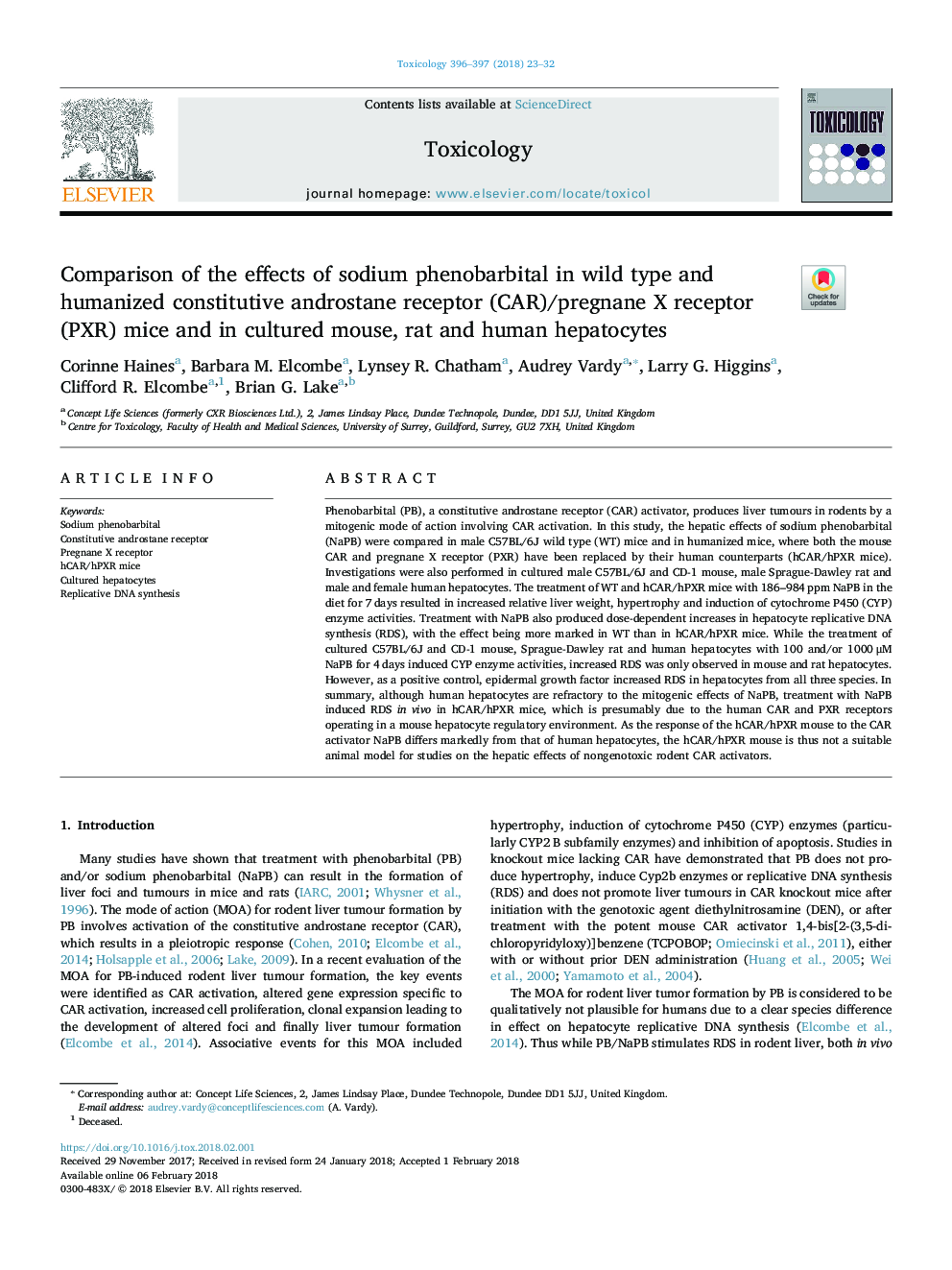| کد مقاله | کد نشریه | سال انتشار | مقاله انگلیسی | نسخه تمام متن |
|---|---|---|---|---|
| 8552811 | 1562276 | 2018 | 10 صفحه PDF | دانلود رایگان |
عنوان انگلیسی مقاله ISI
Comparison of the effects of sodium phenobarbital in wild type and humanized constitutive androstane receptor (CAR)/pregnane X receptor (PXR) mice and in cultured mouse, rat and human hepatocytes
دانلود مقاله + سفارش ترجمه
دانلود مقاله ISI انگلیسی
رایگان برای ایرانیان
کلمات کلیدی
موضوعات مرتبط
علوم زیستی و بیوفناوری
علوم محیط زیست
بهداشت، سم شناسی و جهش زایی
پیش نمایش صفحه اول مقاله

چکیده انگلیسی
Phenobarbital (PB), a constitutive androstane receptor (CAR) activator, produces liver tumours in rodents by a mitogenic mode of action involving CAR activation. In this study, the hepatic effects of sodium phenobarbital (NaPB) were compared in male C57BL/6J wild type (WT) mice and in humanized mice, where both the mouse CAR and pregnane X receptor (PXR) have been replaced by their human counterparts (hCAR/hPXR mice). Investigations were also performed in cultured male C57BL/6J and CD-1 mouse, male Sprague-Dawley rat and male and female human hepatocytes. The treatment of WT and hCAR/hPXR mice with 186-984â¯ppm NaPB in the diet for 7â¯days resulted in increased relative liver weight, hypertrophy and induction of cytochrome P450 (CYP) enzyme activities. Treatment with NaPB also produced dose-dependent increases in hepatocyte replicative DNA synthesis (RDS), with the effect being more marked in WT than in hCAR/hPXR mice. While the treatment of cultured C57BL/6J and CD-1 mouse, Sprague-Dawley rat and human hepatocytes with 100 and/or 1000â¯Î¼M NaPB for 4â¯days induced CYP enzyme activities, increased RDS was only observed in mouse and rat hepatocytes. However, as a positive control, epidermal growth factor increased RDS in hepatocytes from all three species. In summary, although human hepatocytes are refractory to the mitogenic effects of NaPB, treatment with NaPB induced RDS in vivo in hCAR/hPXR mice, which is presumably due to the human CAR and PXR receptors operating in a mouse hepatocyte regulatory environment. As the response of the hCAR/hPXR mouse to the CAR activator NaPB differs markedly from that of human hepatocytes, the hCAR/hPXR mouse is thus not a suitable animal model for studies on the hepatic effects of nongenotoxic rodent CAR activators.
ناشر
Database: Elsevier - ScienceDirect (ساینس دایرکت)
Journal: Toxicology - Volumes 396â397, 1 March 2018, Pages 23-32
Journal: Toxicology - Volumes 396â397, 1 March 2018, Pages 23-32
نویسندگان
Corinne Haines, Barbara M. Elcombe, Lynsey R. Chatham, Audrey Vardy, Larry G. Higgins, Clifford R. Elcombe, Brian G. Lake,